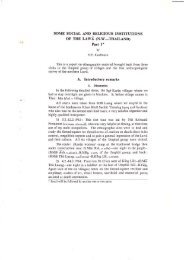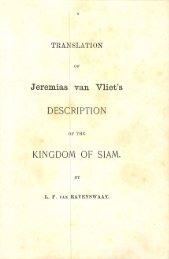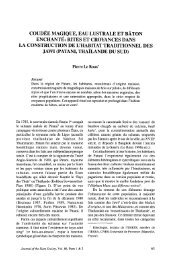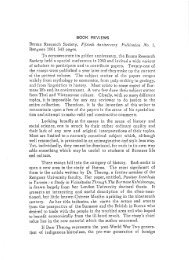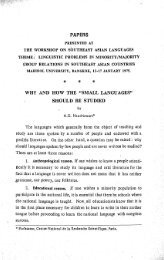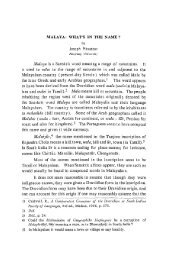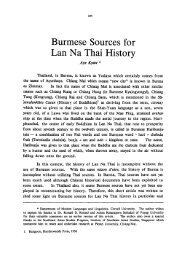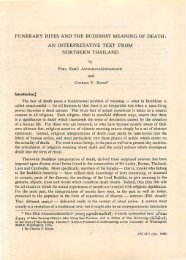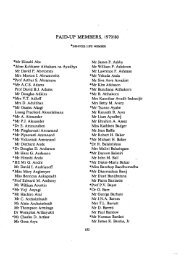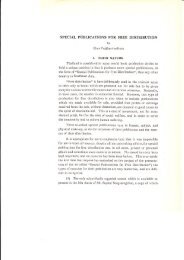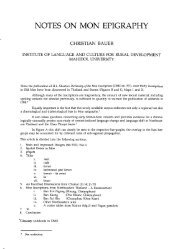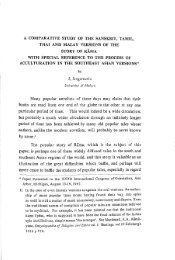REVKJEWS - Siamese Heritage Protection Program
REVKJEWS - Siamese Heritage Protection Program
REVKJEWS - Siamese Heritage Protection Program
You also want an ePaper? Increase the reach of your titles
YUMPU automatically turns print PDFs into web optimized ePapers that Google loves.
Somsakdi Xuto, et al, Thailand in the 1980's : Significant Issues, Problems<br />
and Prospects (Bangkok: Printing Co-Ordination Co., Ltd., 1981), 84 pages.<br />
This is a booklet of four contributors reviewing the socio-economic and political<br />
phenomena which had taken place in Thailand from the 1960's to the end of the<br />
1970's with an attempt to forecast what the 1980's Thailand would be like. It is rather<br />
a brave as well as dangerous enterprise on the part of prominent Thai scholars, who<br />
are quite aware of the nature of their undertaking, when a sentence saying "Some<br />
major exogenous factors may change which might affect considerably the course of<br />
events, and this is beyond the ability of the present state of arts to predict" is inserted.<br />
On the other hand, it seems that some of the so-called "significant issues" and "problems"<br />
are perennial within Thai society, such as the characteristics of Thai politics,<br />
bureaucracy and economic structure, and will stay with us for years to come. As such,<br />
predictability is enhanced to a certain extent. Understandably, a decade-long forecast<br />
like this has to be granted a certain degree of imprecision. Also granted is the assumption<br />
that the forecastors base their assessment on broad enough indicators yet do<br />
not compromise their insight to generality.<br />
Population growth occurs unevenly (perhaps, in a sense, evenly) in Thailand<br />
owing to the fact pointed out in the study that higher population growth takes place in<br />
the northeast and the south while the north and the central plains experience a lower<br />
growth rate. This is linked to the need for labour in the former case because mechanization<br />
in the agricultural sector is still implicitly low due to rural poverty. In other<br />
words, mechanization in agriculture at some stages in the central plains area influences<br />
lower population growth. Or does it? It is pointed out that "regional fertility are<br />
mostly due to topographical economic and social structural variants", and fertility<br />
means population growth. This still seems to be proved by the historical perspective of<br />
population growth of Thailand: that is to say, has the central plains remained an area<br />
of low population growth throughout? Rightly, population growth and unemployment<br />
do not directly correlate. But to play up a demographic element too much will cause<br />
misunderstanding. Australia which has zero population growth is facing unemployment.<br />
Evidently, the Thai economy since the 1960's has become more and more tied<br />
up with "exogenous" factors: capital, market, investment, pricing, credit, money value,<br />
industrialization, etc. It is hopeless to see the emergence of independent Thai<br />
capitalists. The encroachment of or the irreversible course of Thai economy in relations<br />
to world capital and multi-national corporations makes it next to impossible for<br />
Thailand to be able to manage her economy the way she might like, to say nothing of<br />
various constraints acting upon that policy. How the quasi-developed and undeveloped<br />
sectors of the Thai economy will survive is very significant for Thailand.<br />
143



